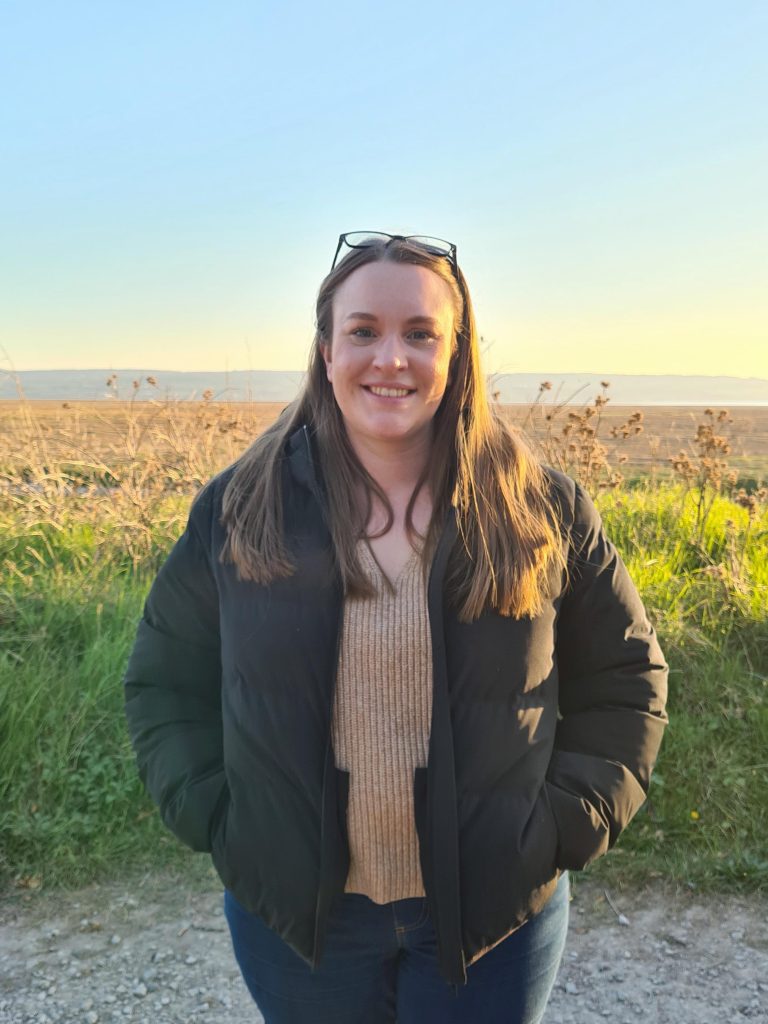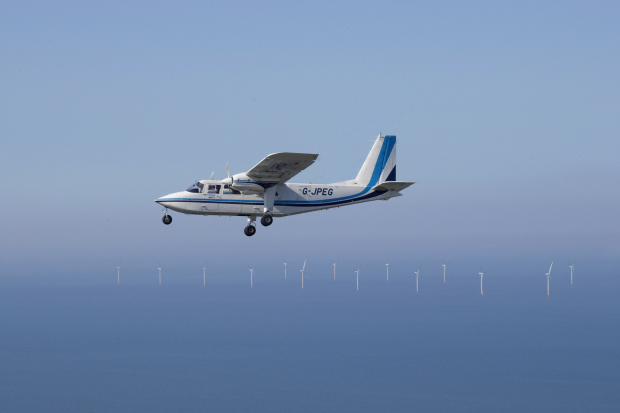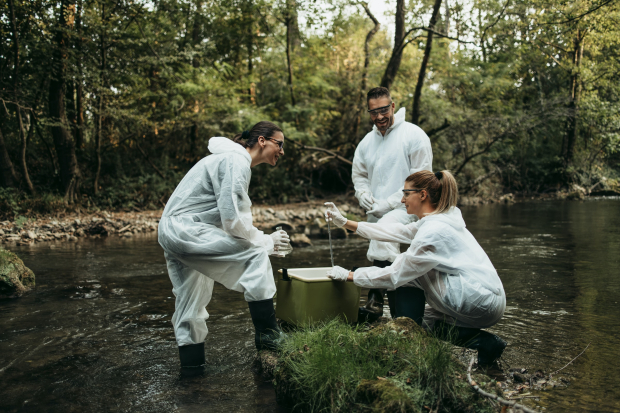New year, new territory as APEM begins work in Swedish waters ...


Join us as we welcome them back and find out more about how they got into science and their career stories.
APEM Ltd is a great place to work, even if we do say so ourselves! We’re a world-class environmental consultancy at the forefront of the latest science and best practice in the company’s many fields of expertise spanning aquatic, marine and terrestrial ecology along with our inhouse remote sensing team and laboratories. There’s also a whole host of other teams within business support, marketing and project management that support our consultancy work.
It’s an exciting time to be a part of APEM as we continue to grow at home and abroad. We continue to further develop our knowledge and capacity, for example in our terrestrial ecology and LiDAR services. We’re also a friendly bunch, passionate about wildlife and the environment, playing a part in making the world a better place.
But don’t just take our word for it. Hear from our colleagues Beth Goddard and Emily Nelson, Ornithologists, who both recently decided to return to APEM after a few years away.

Why did you want to work in science and how did you get there?
From a young age I have always had a love for animals and nature and so wanted to have a career based around this. I studied BSc Zoology at the University of Liverpool and then completed my MSc in Conservation Biology where my research was based on seabird ecology. This led me to my first job at APEM as a Graduate Scientist in the Ornithology team.
What did you used to do at APEM?
I started at APEM back in 2011 after graduating, working as an Image Analyst. I then progressed within APEM to become a Senior Consultant within the Ornithology team until 2018.
What did you do while you were away?
After seven years at APEM I felt that it was time for a new adventure. I went to help manage my local pub where my partner also works and spent two years there.
Why did you decide to return to APEM? And what is your new role?
As both my partner and I were furloughed during the COVID-19 pandemic there was a lot of uncertainty around job security. After speaking with a few of my old work colleagues at APEM I felt that with the progression that APEM had made over the past couple of years it felt like a good opportunity to return as the company was continuing to grow and take on new exciting projects.
My new job role is Senior Ornithology Consultant. It involves managing ornithological projects, particularly for offshore wind surveys and providing ornithological consultancy services from bringing in new projects to production of high-quality scientific report outputs.
What are you most enjoying in your new role at APEM?
I am enjoying working back at APEM, there are a lot of interesting projects being worked on across the company. Being able to contribute to projects that will help to protect our natural world gives me great satisfaction, with an added bonus of working with a great team of people too.

Why did you want to work in science and how did you get there?
I’ve always had a questioning nature and so my love of science, particularly biology, has been with me from a young age. I was very lucky to have parents who fostered this enthusiasm and it was an obvious choice for me to study zoology at university.
And so, the seabird passion began! My dissertation involved trips out to the Farne Islands, which are an internationally important breeding ground for seabirds – and I was hooked. They’re just so fascinating – birds which live predominantly at sea, travelling over thousands of miles each year during migration and returning to breed in the same place, with the same partner, year after year – amazing. And they’re just so beautiful!
The opportunities and people that I encountered during my degree gave me the confidence to seek out a funded PhD. I was fortunate to secure a NERC-funded PhD with the Centre for Ecology and Hydrology (CEH) and Aberdeen University looking at the ecological and genetic consequences of dispersal in shags (yes – I think I’ve heard all of the jokes!)
Meeting people through my PhD work – amateurs, academics, industry experts and government – opened my eyes to the broad range of career possibilities open to a science graduate. At around the same time, the offshore renewables sector started to take off and the interaction between seabirds and these novel marine structures was becoming a hot topic.
After completing my studies, I took up a post with APEM to work as an Ornithological Consultant. The role enabled me to apply my academic knowledge across a suite of offshore renewables projects, allowing me to play a small part in supporting developers to deliver projects in a scientifically robust and ecologically sensitive manner.
What work did you undertake previously at APEM?
As an Ornithological Consultant, I was primarily involved in the delivery of baseline bird and marine mammal surveys for offshore renewable developments, together with the interpretation, analyses and reporting of the resultant datasets.
Much of my time was spent undertaking spatial modelling to determine the abundance and distribution of seabird species across proposed projects and it was always fascinating to reveal the patterns of spatial usage over the course of a few years.
Determining where seabirds spend their time in the marine environment (and how this changes over time) is a key question in determining how best to avoid potential impacts from offshore development, so being at the forefront of wide-scale offshore surveying was very exciting. I was promoted to senior level during this time and took on greater responsibilities for managing projects and staff, which were all new challenges that I relished.
What did you do while you were away?
After a few years at APEM, personal circumstances meant that the journey into the office was becoming difficult to maintain, and I moved to work for another environmental consultancy. I spent seven years there, working my way up to a principal post and managing their team of Marine Ornithologists in delivering both onshore and offshore renewables consents.
My knowledge of the assessment process, including both Ecological Impact Assessment (EcIA) and Habitats Regulations Assessment/Appraisal (HRA) continued to develop, along with my understanding of how consenting regimes differ both within and outside the UK. I was also fortunate enough to attend a number of conferences overseas during this time, allowing me to understand the different approaches taken globally to meet decarbonisation targets.
Why did you decide to return to APEM? And what is your new role?
I’ve always maintained contact with former colleagues at APEM, and so I was aware that the company is going through a very exciting time of expansion.
Given the pandemic, the way that we all work has changed, significantly so for some, but the increase in homeworking has seen greater flexibility in working patterns for many office-based employees.
The ability to work from home has enabled me to return to APEM and take up a Principal Ornithologist post within the Ornithology EIA team. So far, I’ve been involved in EcIA and HRA work for several offshore wind farm extensions. It’s been great to work with such an enthusiastic and experienced team of Ornithologists. I’ve already learned a lot about how some of the proposed developments are working towards reducing their potential impacts on seabirds, which is a key challenge given the latest ambitious decarbonisation targets set by the UK Government.
I hope that I can bring my knowledge of the Scottish consenting process into play to support APEM’s ambitions in the ScotWind programme, and I look forward to all the new opportunities that the role will bring.
Welcome back Beth and Emily, we’re thrilled to see you return to the team!
Interested in working at APEM? Head to our careers site to see our latest job vacancies.


APEM are working with Swedish renewables developer Freja Offshore to provide seasonal offshore digital aerial surveys of two separate sites in the Baltic Sea.
+ Read more


Find out more about sponsorship and advertising, and see what the team picked up in just an hour on our award-winning litter boat
+ Read more



APEM Group welcomes UK Governments Autumn statement focus on fostering renewable energy investment and reducing planning burdens on critical infrastructure
+ Read more




Using Machine Learning and Reinforcement Learning techniques, WILDetect aims to develop a methodology for detecting maritime bio ecosystems.
+ Read more